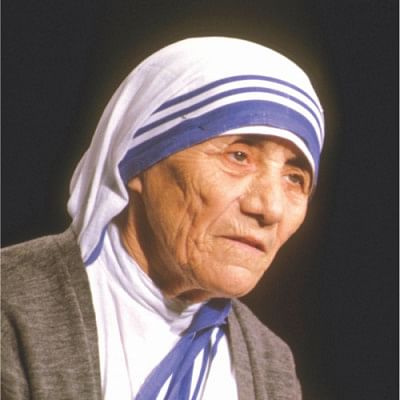The Power of Love

It is a truth that the intellect is limited in its abilities to fix the world's problems. From history we have witnessed the power of emotion in creating massive positive changes in the world. Mahatma Gandhi and Martin Luther King's peaceful protests, that combined their intelligence and education with the inner force of emotion and idealistic vision, left an impact on the world that cold hard intellect alone could never inspire. During a mass crisis like a famine or a natural disaster, victims remain in a state of incredible shock in which psychological pain and fear gains dominance over physical challenges. People in suffering are as emotionally undernourished as they are physically depleted. Oftentimes it is the fear of one's cries being unheard, one's call for help being unanswered, the sense of hopelessness and tragedy that people suffer from the most. In times like these, perhaps hugs are more powerful medicine than antibiotics or vitamins.
Mother Teresa, one of the greatest humanitarians of all time, advocated the power of love to heal the world's pain. Instead of using wealth, political power or superior intellect to fix the problems of the world, she relied upon her ability to express care and love to bring light to the lives of countless sufferers.
Mother Teresa was born on August 26, 1910 in the Republic of Macedonia and baptised as Agnes Gonxha Bojaxhiu. Her father passed away when she was only 8 years old which led her to develop a close relationship with her mother Drana Bojaxhiu, who had a deep influence on her. From an early age Drana Bojaxhiu taught her daughter the value of charity often telling her: "My child, never eat a single mouthful unless you are sharing it with others.”
In 1928, after finishing primary and secondary education, Agnes became a nun, marking her entry into the spiritual path. She went onto perform her service first to Ireland and then to Calcutta, to teach at Saint Mary's High School for girls. During her time at the school she became fluent in speaking Bengali and Hindi and actively cared for impoverished students while teaching them history and geography. In 1937, she took her Final Profession of Vows, “to a life of poverty, obedience and chastity.”
Mother Teresa continued to teach at Saint Mary's and went onto becoming its principal in 1944. However, on September 10, 1946, a spiritual experience would change the course of her life drastically. While riding a train to the Himalayan Foothills for a retreat, she had a vision in which her spiritual purpose was revealed to her. Mother Teresa was instructed to leave teaching and proceed to the slums of Calcutta to help the starving and the sick. In 1948, after finally receiving permission from the Archbishop, Mother Teresa left her convent to pursue her life's purpose. After completing six months of basic medical training she stepped foot into the slums of Calcutta to reach out to anyone in need of care.
Mother Teresa's work soon took an organisational form, developing into the congregation, Missionaries of Charity. She started her work in a broken-down building which the government donated for her work, starting an open-air school and a shelter for the homeless. As the numbers of her congregation expanded she began receiving donations from all over the world. Soon her efforts led to the development of a colony for lepers, a nursing home and family clinic, an orphanage and multiple mobile health clinics.
In 1979 Mother Teresa was awarded the Nobel Peace Prize. With no need for any material possessions other than 2 saris, which she wore interchangeably, Mother Teresa requested that the money being spent to honor her with a banquet be donated to charity instead. By the time of her death on September 5, 1997, more than 4000 missionaries around the world dedicated themselves to her cause.
Having touched the lives of millions with her nurture, Mother Teresa left the world an important teaching: “We think sometimes that poverty is only being hungry, naked and homeless. The poverty of being unwanted, unloved and uncared for is the greatest poverty.” She was declared a saint by the Catholic Church in 2003.

 For all latest news, follow The Daily Star's Google News channel.
For all latest news, follow The Daily Star's Google News channel. 



Comments